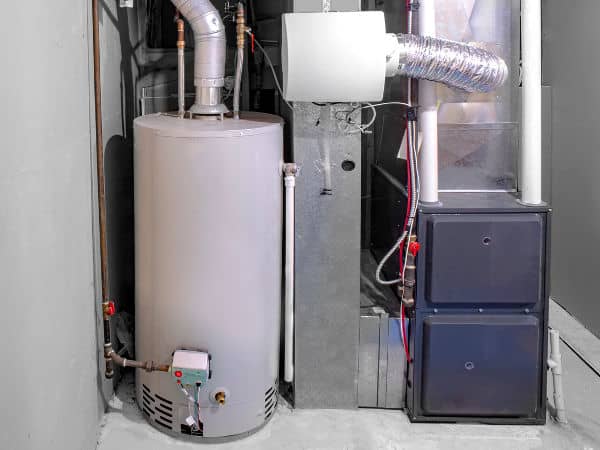Expert Advice on Maintaining Your Home's Hot Water System
Expert Advice on Maintaining Your Home's Hot Water System
Blog Article
The writer is making a number of great observations related to Tips on Maintaining a Water Heater as a whole in this article down below.

Hot water is crucial for day-to-day convenience, whether it's for a revitalizing shower or washing dishes. To guarantee your hot water system runs efficiently and lasts much longer, normal maintenance is key. This article gives useful tips and understandings on exactly how to preserve your home's hot water system to prevent interruptions and pricey repair services.
Introduction
Keeping your home's hot water system may appear complicated, however with a couple of straightforward steps, you can guarantee it runs smoothly for several years to find. This overview covers everything from recognizing your hot water system to do it yourself maintenance pointers and knowing when to employ professional assistance.
Importance of Preserving Your Warm Water System
Routine upkeep not only prolongs the life-span of your hot water system however also ensures it runs efficiently. Ignoring maintenance can result in lowered efficiency, higher power bills, and even early failing of the system.
Signs Your Hot Water System Demands Upkeep
Understanding when your warm water system requires attention can avoid significant concerns. Look out for indications such as inconsistent water temperature, odd sounds from the heating system, or rusty water.
Comprehending Your Warm Water System
Prior to diving into maintenance jobs, it's helpful to recognize the standard elements of your warm water system. Normally, this includes the hot water heater itself, pipelines, anode poles, and temperature controls.
Monthly Upkeep Tasks
Normal month-to-month checks can help catch minor issues prior to they rise.
Purging the Water Heater
Flushing your water heater eliminates sediment build-up, boosting efficiency and prolonging its life.
Checking and Replacing Anode Rods
Anode rods avoid rust inside the container. Inspecting and replacing them when worn out is crucial.
Examining and Changing Temperature Settings
Changing the temperature level setups makes sure ideal efficiency and security.
DIY Tips for Upkeep
You can do a number of upkeep tasks yourself to keep your hot water system in leading condition.
Looking for Leakages
Consistently evaluate pipes and connections for leaks, as these can bring about water damage and greater expenses.
Evaluating Pressure Alleviation Valves
Examining the stress relief valve ensures it functions appropriately and protects against extreme stress accumulation.
Insulating Pipes
Insulating warm water pipelines minimizes heat loss and can save power.
When to Call an Expert
While DIY maintenance is advantageous, some issues call for expert knowledge.
Complex Concerns Calling For Expert Help
Instances consist of major leakages, electrical problems, or if your water heater is continually underperforming.
Routine Professional Upkeep Advantages
Professional upkeep can include comprehensive inspections, tune-ups, and making certain conformity with safety criteria.
Final thought
Normal maintenance of your home's hot water system is important for performance, durability, and cost financial savings. By following these ideas and recognizing when to seek specialist help, you can make certain a reputable supply of hot water without unforeseen disturbances.
How to Maintain an Instant Hot Water Heater
Before tinkering with your hot water heater, make sure that it’s not powered on. You also have to turn off the main circuit breaker and shut off the main gas line to prevent accidents. Also turn off the water valves connected to your unit to prevent water from flowing into and out of the appliance. 2. When you’re done, you have to detach the purge valves’ caps. These look like the letter “T†and are situated on either side of the water valves. Doing so will release any pressure that has accumulated inside the valves while at the same time avoid hot water from shooting out and burning your skin. 3. When the purge valves’ caps are removed, you have to connect your hosing lines to the valves. Your unit should have come with three hoses but if it didn’t, you can purchase these things from any hardware or home repair shops. You can also get them from retail stores that sell water heating systems. Read the user’s manual and follow it to complete this task properly. When the hosing lines are connected, open the purge port’s valves. 4. You should never use harsh chemical cleaners or solutions when cleaning your unit. Make use of white vinegar instead. It should be undiluted and you’ll probably use about 2 gallons. 5. Now flush your water heater. This task should probably take about 40 minutes. We can’t give you specific directions for this because the procedure is carried out depending on the type, model and brand of your heater. With that being said, refer to the user’s manual. 6. When you’re done draining the unit, you have to turn off the purge port valves again. Remove the hosing lines that you earlier installed on each of the water valves. Put the valve caps (purge port) back in their respective places and be very careful so as not to damage the rubber discs that are found inside these caps. 7. Now that everything’s back in place, check your user’s manual again to find out how to reactivate your water heating system. 8. Once it is working, turn one of your hot water faucets on just to let air pass through the heater’s water supply pipes. Leave the tap on until water flows smoothly out of it. https://www.orrplumbing.com/blog/2014/september/how-to-maintain-an-instant-hot-water-heater/

We were brought to that write-up on How to Maintain a Hot Water Heater in a Few Simple Steps through a pal on our other website. Sharing is nice. You won't know, you will be doing someone a favor. Thank-you for going through it.
Source This Article Report this page